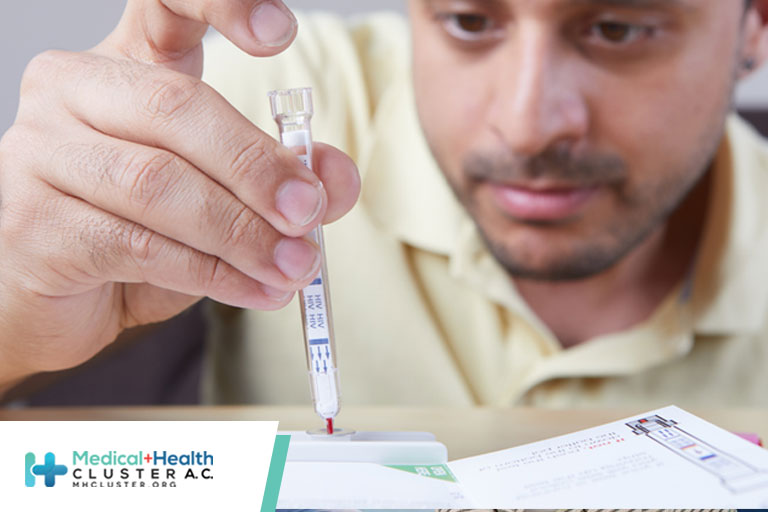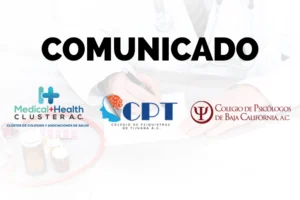En atención a la creciente preocupación sobre la confianza en...
Leer más
Q&A: More HIV self-tests needed to bolster market, drive down cost, increase access

The only available self-test for HIV was approved by the FDA in 2012. Since then, no company has applied for FDA clearance for a similar test.
In a paper published in Clinical Infectious Diseases, Stephany Ma, MPH, research program manager at the John Hopkins University School of Medicine, and colleagues highlighted the role and importance of these tests, as well as possibly reclassifying HIV self-tests from class III to class II moving forward.
Healio spoke with Ma to discuss what more is needed to bolster the market for these tests and what impact COVID-19 may have had.
Healio: What prompted this paper?
Ma: The commentary piece originated from my capstone paper during my Master of Public Health at the Johns Hopkins Bloomberg School of Public Health. I was interested in exploring the use of over-the-counter (OTC) tests from a public health perspective given the explosion of OTC tests for COVID.
I thought it was especially important to look at the only other OTC test for an infectious disease available outside of tests for COVID-19. Unlike laboratory or point-of-care tests, OTC tests are meant to be used and interpreted outside traditional health services.
As it stands, OTC tests are largely dominated by lateral flow tests, with the most common examples being pregnancy and COVID-19 tests. These tests are qualitative in nature (giving a “yes” or “no” answer). Most COVID-19 and HIV self-tests on the market around the world are based on this lateral flow technology.
Healio: What are the key points made in the paper?
Ma: There is only one approved HIV self-test by the FDA. In contrast, WHO has approved six since 2016 — two of which were approved within the last year.
The FDA classifies the HIV self-test as class III devices, which carry a significantly higher regulatory burden.
With significantly lower regulatory burden and committed international procurement agreements, companies see limited upside in applying for approval in the United States.
Increasing the number of approved HIV self-tests could increase market competition and drive down cost, which is the first step to increasing access to testing.
Healio: What is the difference between class II and class III tests, and what would be the benefits of reclassifying them?
Ma: The FDA assigns in vitro diagnostic (IVD) devices based on their risk level and controls needed to ensure proper safety and effectiveness of the device.
Class III devices are usually reserved for products that are implantable or used to sustain or support life (ie, pacemakers or ventilators) or that are high risk (ie, novel devices with no comparable product on the market).
Most IVD devices are classified as class II devices, such as pregnancy tests or glucose meters. Because of the risk differences between class III and class II devices, the regulatory pathway to get cleared by the FDA is significantly more stringent and costly for class III devices.
Healio: You wrote that “no company has applied for FDA clearance in a decade.” Because it is likely that now, more so than before, more people are familiar with home testing because of COVID-19, do you think that will impact whether more companies will apply for clearance?
Ma: All HIV tests have historically been classified as class III devices because of the potential threat to the safety of our nation’s blood supply.
The FDA reclassified certain point-of-care HIV tests in June 2022 but left out HIV self-tests. The FDA asserts there are still risks associated with HIV self-testing, and rightfully so. HIV is still an uncurable disease with a stigma associated with testing and diagnosis. However, HIV self-testing has been used to target people who are hesitant to test, especially people not using existing services.
Furthermore, the FDA has not offered any pathways that would help alleviate the regulatory burden on companies considering applying for clearance, so it is not clear that many companies are rushing to get clearance.
The interest in using HIV self-testing is growing and probably was catalyzed by COVID-19 when other avenues for increasing access to testing decreased; many public health agencies pivoted to sending HIV self-tests during the COVID-19 pandemic. The CDC has committed to sending 1 million tests over the next 5 years.
“No company has applied for FDA clearance in a decade” needs to be contrasted with how WHO has prequalified six HIV self-tests since 2016. With a significantly lower regulatory burden and procurement agreements, companies are willing to sell their HIV self-tests for as little as $1 per unit in low- and middle-income countries than try to apply for clearance in the U.S. where unit prices can be higher but may not be enough to recoup money for applying for clearance.
Healio: What is the overall take–home message?
Me: We need more HIV self-tests to increase market competition to drive down cost to really increase access to HIV testing — this is the first step.
Many infectious disease clinicians are not aware of these barriers to HIV self-test IVD. The approval of the first HIV self-test was contingent on very optimistic modeling on use. However, mass use of HIV self-testing has only picked up in the past few years. It is clear that we are establishing use for HIV self-tests.
However, with just one test, there are drawbacks. The “window period” for detection in an oral test is longer than that for a blood-based one, and in the decade since approval, HIV lateral flow tests have improved significantly — better detection closer to time of acute infection.
Of course, the use of HIV self-testing is a very nuanced topic … there needs to be programmatic support to ensure proper linkage to care and preventive services.
Source: https://www.healio.com/news/infectious-disease/20230124/qa-more-hiv-selftests-needed-to-bolster-market-drive-down-cost-increase-access?fbclid=IwAR0NUye1OvoKvHjLDzdBdBORPwoahuF-Vq70fUYRflidUh6dlxf-f1EdFOI




